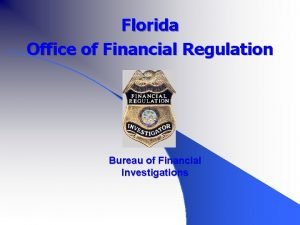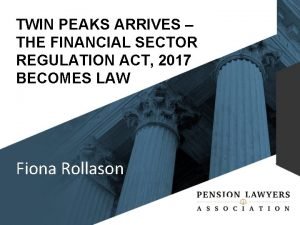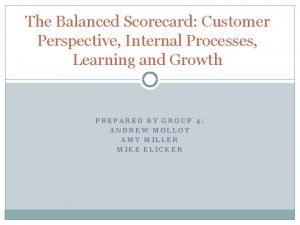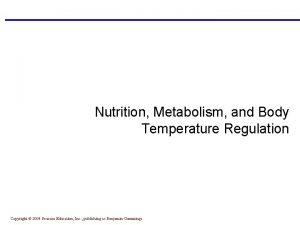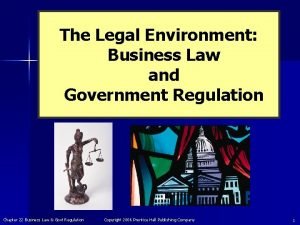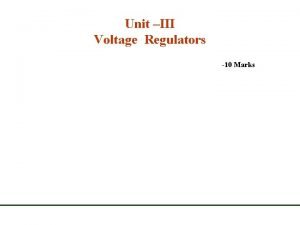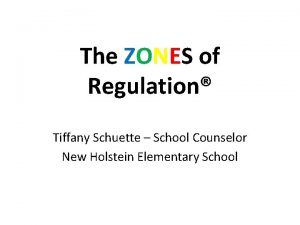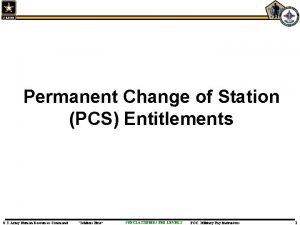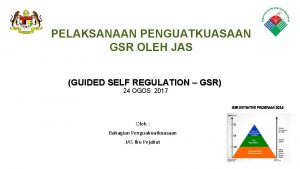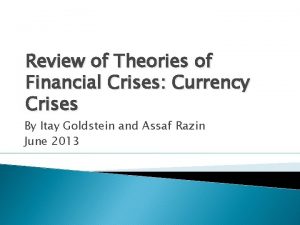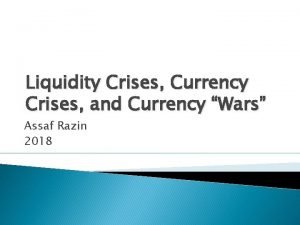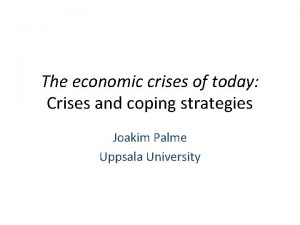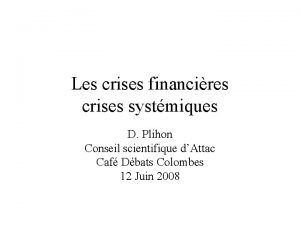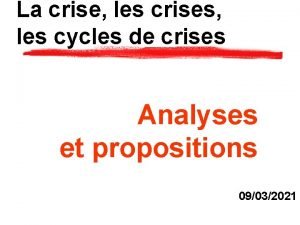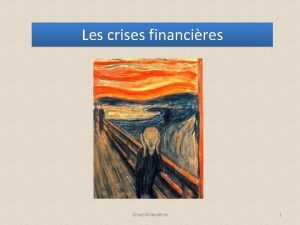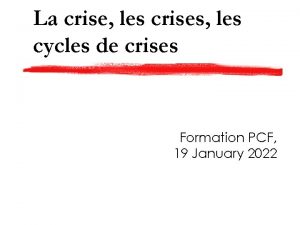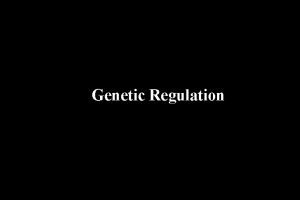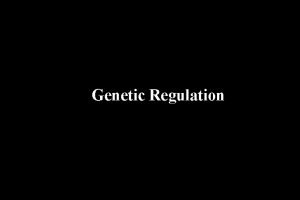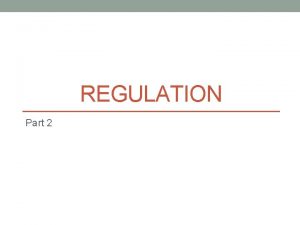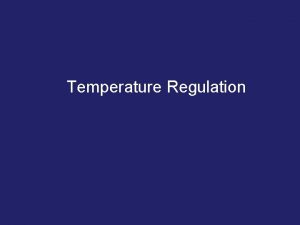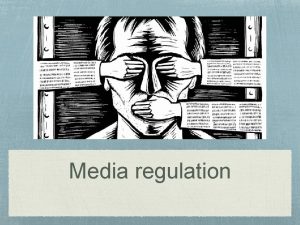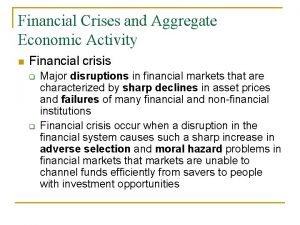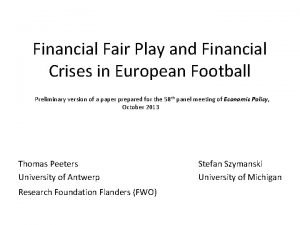Lesson 9 Financial Crises and Financial Regulation LEARNING
























































- Slides: 56

Lesson 9 Financial Crises and Financial Regulation LEARNING OBJECTIVES After studying this lesson, you should be able to: 9. 1 Explain what financial crises are and what causes them 9. 2 Understand the financial crisis that occurred during the Great Depression 9. 3 Understand what caused the financial crisis of 2007 -2009 9. 4 Discuss the connection between financial crises and financial regulation

CHAPTER 9 Financial Crises and Financial Regulation A CLOUDY CRYSTAL BALL ON THE FINANCIAL CRISIS • Problems with the U. S. housing market ultimately led to the worst recession since the Great Depression, yet many policymakers, business leaders, and economists failed to see the crisis approaching. • Policymakers, managers of financial firms, investors, and households were struggling to deal with unprecedented events. • An Inside Look at Policy on page 374 discusses the issues Congress grappled with in 2010 during the debate over the Dodd-Frank Act.

Key Issue and Question Issue: The financial crisis of 2007– 2009 was the most severe since the Great Depression of the 1930 s. Question: Does the severity of the 2007– 2009 financial crisis explain the severity of the recession during those years?

9. 1 Learning Objective Explain what financial crises are and what causes them.

Financial crisis A significant disruption in the flow of funds from lenders to borrowers. • Economic activity depends on the ability of households and firms to borrow. • A financial crisis disrupts the flow of funds from lenders to borrowers. • A financial crisis typically leads to an economic recession as households and firms face difficulty in borrowing money. • In the past, most of the financial crises in the United States involved the commercial banking system. The Origins of Financial Crises

The Underlying Fragility of Commercial Banking • Banks have a maturity mismatch because they borrow short term from depositors and lend long term to households and firms. • This means that banks face a liquidity risk because they may be unable to meet their depositors’ withdrawals. • Banks can borrow or sell assets to raise funds. Insolvent The situation for a bank or other firm whose assets have less value than its liabilities, so its net worth is negative. • An insolvent bank may be unable to meets its obligations to pay off its depositors. The Origins of Financial Crises

Bank Runs, Contagion, and Bank Panics • Prior to 1933, the United States had no system of government deposit insurance. • Once the bank’s liquid assets were exhausted, the bank would have to shut its doors, at least temporarily. Bank run The process by which depositors who have lost confidence in a bank simultaneously withdraw enough funds to force the bank to close. • In the absence of deposit insurance, the stability of a bank depends on the confidence of its depositors. The Origins of Financial Crises

Contagion The process by which a run on one bank spreads to other banks resulting in a bank panic. • If multiple banks have to sell the same assets—for example, mortgage-backed securities—the prices of these assets are likely to decline and some banks may even be pushed to insolvency. Bank panic The situation in which many banks simultaneously experience runs. • A bank panic feeds on a self-fulfilling perception: If depositors believe that their banks are in trouble, the banks are in trouble. The Origins of Financial Crises

Government Intervention to Stop Bank Panics • Governments have two main ways they can attempt to avoid bank panics: (1) A central bank can act as a lender of last resort. (2) The government can insure deposits. Lender of last resort A central bank that acts as the ultimate source of credit to the banking system, making loans to solvent banks against their good, but illiquid, loans. Federal Deposit Insurance Corporation (FDIC) A federal government agency established by Congress in 1934 to insure deposits in commercial banks. The Origins of Financial Crises

Figure 9. 1 Bank Runs and the Government Response Bank runs can cause good banks, as well as bad banks, to fail. Bank failures are costly because they reduce credit availability to households and firms. • The Origins of Financial Crises

Solved Problem 9. 1 Would Requiring Banks to Hold 100% Reserves Eliminate Bank Runs? As we saw in lesson 10, the Federal Reserve requires banks to hold reserves equal to 10% of their holdings of checkable deposits above a certain level. In the 1950 s, Milton Friedman of the University of Chicago and winner of the Nobel Prize in Economics proposed that banks be required to hold 100% reserves. In 2010, Laurence J. Kotlikoff of Boston University advocated a similar plan. If required to hold 100% reserves, banks would make loans and buy securities with their capital rather than with deposits. Briefly discuss how this proposal would affect the likelihood of bank runs. The Origins of Financial Crises

Solved Problem 9. 1 Would Requiring Banks to Hold 100% Reserves Eliminate Bank Runs? Solving the Problem Step 1 Review the lesson material. Step 2 Answer the problem by discussing what causes bank runs and whether requiring banks to hold 100% reserves would affect the likelihood of runs. We have seen that bank runs are caused by depositors’ knowledge that banks keep only a fraction of deposits on reserve and loan out or invest the remainder. If banks held 100% reserves, rather than, say, 10%, depositors would no longer have to fear that their money would not be available should they choose to withdraw it. Depositors would also not be at risk of losing money if banks made poor investments because the value of a bank’s loans and securities would no longer be connected to the bank’s ability to refund depositors’ money. We can conclude that whatever the other merits or drawbacks of a system of 100% reserve banking, such a system would not be subject to runs. The Origins of Financial Crises

Bank Panics and Recessions The Origins of Financial Crises

Exchange Rate Crises Countries have attempted to keep the value of their currency fixed by pegging it against another currency Figure 9. 2 An Exchange Rate Crisis Resulted from the Pegging of East Asian Currencies The government of South Korea pegged the value of the won against the dollar. The pegged exchange rate, E 2, was above the equilibrium exchange rate, E 1. To maintain the peg, the Korean central bank had to use dollars to buy surplus won equal to Won 3 – Won 2. • The Origins of Financial Crises

Sovereign Debt Crises • Sovereign debt refers to bonds issued by a government. • A sovereign debt crisis occurs when a country has difficulty making interest or principal payments on its bonds. • If the government defaults and is unable to issue bonds, it will have to depend on tax revenues to pay for its spending. • Even if the government avoids default, it will probably have to pay much higher interest rates when it issues bonds. • The resulting decreases in government spending or increases in taxes can push the economy into recession. The Origins of Financial Crises

• Sovereign debt crises result from either of two circumstances: (1) chronic government budget deficits and interest payments taking up an unsustainably large fraction of government spending, or (2) a severe recession that increases government spending and reduces tax revenues, resulting in soaring budget deficits. • Following the 2007– 2009 recession, several European governments, most notably that of Greece, were pushed to the edge of debt crises, and imposed sharp spending cuts and higher taxes. The Origins of Financial Crises

Making the Connection Why Was the Severity of the 2007– 2009 Recession So Difficult to Predict? • Recessions in the United States between 1933 and 2007 were not accompanied by bank panics, but the recession of 2007– 2009 did involve a panic in the “shadow banking system. ” • Both the Great Depression and the recession of 2007– 2009 were severe. Do recessions accompanied by bank panics tend to be more severe? • Research shows that recessions following bank crises have been more severe with higher unemployment rates, sharper declines in real GDP and prices, and longer durations. • Government debt also soared from increased government spending and higher budget deficits. The Origins of Financial Crises

Making the Connection Why Was the Severity of the 2007– 2009 Recession So Difficult to Predict? The table below shows some key indicators for the 2007– 2009 U. S. recession compared with other U. S. recessions of the post-World War II period. Because most people did not see the financial crisis coming, they also failed to anticipate the severity of the 2007– 2009 recession. The Origins of Financial Crises

9. 2 Learning Objective Understand the financial crisis that occurred during the Great Depression.

The Start of the Great Depression • Several factors helped to increase the severity of the downturn during the Great Depression. • Stock prices plunged, thereby reducing household wealth, making it more difficult for firms to raise funds, and increasing uncertainty. Higher uncertainty leads to decreases in spending. • In addition, Congress passed the Smoot-Hawley Tariff Act in June 1930, which led to retaliatory increases in foreign tariffs, thereby reducing U. S. exports. • Following legislation that restricted immigration, population growth declined, and spending on new houses fell. The Financial Crisis of the Great Depression

Figure 9. 3 The Great Depression In panel (a), the data are expressed as index numbers relative to their values in 1929. Real GDP declined by 27% between 1929 and 1933, while real consumption declined by 18% and real investment fell by an astonishing 81%. These declines were by far the largest of the twentieth century. Panel (b) shows that the unemployment rate tripled from 1929 to 1930, was above 20% in 1932 and 1933, and was still above 10% in 1939, a decade after the Great Depression had begun. • The Financial Crisis of the Great Depression

Figure 9. 4 The S&P 500, 1920– 1939 The Federal Reserve raised interest rates after it became concerned by the rapid increases in stock prices during 1928 and 1929. The decline in stock prices from 1929 to 1932 was the largest in U. S. history. • The Financial Crisis of the Great Depression

The Bank Panics of the Early 1930 s Figure 9. 5 Bank Suspensions, 1920– 1939 Bank suspensions, during which banks are closed to the public either temporarily or permanently, soared during the bank panics of the early 1930 s before falling to low levels following the establishment of the FDIC in 1934. • The Financial Crisis of the Great Depression

Debt-deflation process The process first identified by Irving Fisher in which a cycle of falling asset prices and falling prices of goods and services can increase the severity of an economic downturn. As the economic downturn worsened, the price level would fall, with two negative effects: • Real interest rates would rise, and the real value of debts would increase. As the price index declined, fixed payments on loans and bonds had to be made with dollars of greater purchasing power, increasing the burden on borrowers and raising the likelihood of defaults. • This process of falling asset prices, falling prices of goods and services, and increasing bankruptcies and defaults can increase the severity of an economic downturn. The Financial Crisis of the Great Depression

The Failure of Federal Reserve Policy during the Great Depression Why did the Fed not intervene to stabilize the banking system? Economists have pointed to four possible explanations: 1. No one was in charge. Power within the Federal Reserve System was divided. The Fed had less independence from the executive branch, and important decisions required forming a consensus that proved hard to come by, so taking decisive policy actions was difficult. 2. The Fed was reluctant to rescue insolvent banks. Fed officials believed that taking actions to save them might encourage risky behavior by bank managers. In other words, the Fed was afraid of the problem that economists now call moral hazard. The Financial Crisis of the Great Depression

3. The Fed failed to understand the difference between nominal and real interest rates. With the price level falling, real interest rates were much higher in the early 1930 s than policymakers at the Fed believed them to be. 4. The Fed wanted to “purge speculative excess. ” Many members of the Fed believed that the Depression was the result of financial speculation during the late 1920 s. So the Fed followed the “liquidationist” policy, which held that allowing the price level to fall and weak banks and weak firms to fail was necessary before a recovery could begin. The Financial Crisis of the Great Depression

Making the Connection Did the Failure of the Bank of United States Cause the Great Depression? • In the early 1960 s, Milton Friedman and Anna Schwartz published an influential discussion of the importance of bank panics in their book A Monetary History of the United States, 1867– 1960. • Friedman and Schwartz singled out the failure in December 1930 of the Bank of United States, a large private bank located in New York City. • The Bank of United States ran into trouble from falling real estate prices and mortgage defaults. It became the largest bank to have failed in the United States up to that time. Economists continue to disagree as to whether the Federal Reserve should have moved more forcefully to keep the bank from closing. • Some economists even argue that this episode was important in leading the Fed to develop the “too-big-to-fail” doctrine, which holds that no large financial institution can be allowed to fail because its failure may destabilize the financial system. The Financial Crisis of the Great Depression

9. 3 Learning Objective Understand what caused the financial crisis of 2007– 2009.

The Housing Bubble Bursts • When housing prices rise faster than housing rents, the likelihood that the housing market is experiencing a bubble is increased. Between January 2000 and May 2006, house prices more than doubled, while rents increased by less than 25%, providing evidence of a bubble. • Home prices began to decline in 2006 after some homebuyers had trouble making mortgage payments. When lenders foreclosed on some of these loans, the lenders sold the homes, causing housing prices to decline further. Mortgage lenders that made subprime loans suffered heavy losses. • Most banks and other lenders tightened their requirements for borrowers. This credit crunch made it more difficult for potential homebuyers to obtain mortgages, which further depressed the housing market. The Financial Crisis of 2007– 2009

Bank Runs at Bear Stearns and Lehman Brothers • August 2007: French bank BNP Paribas announces that it would not allow investors to redeem their shares in three funds that had held large amounts of mortgagebacked securities. Credit conditions worsen. • March 2008: Lenders become concerned about the decline in mortgage-backed securities at Bear Stearns. With aid from the Federal Reserve, Bear is saved from bankruptcy. • August 2008: The crisis deepens as nearly 25% of subprime mortgages are at least 30 days past due. The Financial Crisis of 2007– 2009

• September 2008: Lehman Brothers files for bankruptcy protection after the Treasury and the Fed decline to help. Merrill Lynch agrees to sell itself to Bank of America. The failure of Lehman marks a turning point in the crisis. • Reserve Primary Fund announces that it would “break the buck” by allowing the value of shares in the fund to fall to $0. 97. • Many parts of the financial system become frozen as trading in securitized loans largely stops. The Financial Crisis of 2007– 2009

The Federal Government’s Extraordinary Response to the Financial Crisis • Having focused on the commercial banking system, the government was poorly equipped to deal with a crisis in the shadow banking system. • Most policymakers did not realize until well into 2007 that the subprime crisis might evolve into a full-blown financial crisis. • The Fed began aggressively driving down short-term interest rates; the federal government effectively nationalized Fannie Mae and Freddie Mac; and the Treasury moved to stop the runs on money market mutual funds. The Financial Crisis of 2007– 2009

• In September 2008, the Fed and the Treasury also unveiled a plan for Congress to authorize $700 billion to be used to purchase mortgages and mortgage-backed securities from financial firms and other investors. • The objective of the Troubled Asset Relief Program (TARP) was to restore a market in these securities. Ultimately, TARP funds were used to make direct preferred stock purchases in banks to increase their capital. • Also, a stress test administered by the Treasury to 19 large financial firms during early 2009 helped to reassure investors that the firms had sufficient capital to deal with a severe economic downturn. The Financial Crisis of 2007– 2009

9. 4 Learning Objective Discuss the connection between financial crises and financial regulation.

• New government financial regulations typically occur in response to a crisis. There is a regular pattern: (1) crisis, (2) regulation, (3) response to new regulations by financial firms, and (4) response by regulators. Lender of Last Resort • Congress created the Federal Reserve System as the lender of last resort to provide liquidity to banks during bank panics. • The Fed failed its first crucial test when it stood by while the banking system collapsed in the early 1930 s. • Congress responded to this failure by establishing the FDIC and by reorganizing the Fed to make the Federal Open Market Committee (FOMC) to centralize decision making. Financial Crises and Financial Regulation

Success in the Postwar Years and the Development of the “Too-Big-to. Fail” Policy • The Fed has performed its role well during most of the post-World War II period. • In 1970, when the quality of commercial paper issued by large corporations came into question, the Fed helped to avoid a crisis by providing commercial banks with loans. • Again in 1974, when banks feared a run by depositors holding negotiable CDs, the Fed avoided what could have been a significant blow to the financial system. • During the stock market crash of October 19, 1987, many securities firms were hurt by falling stock prices. Before the stock market opened the following day, Federal Reserve Chairman Alan Greenspan announced in the media the Fed’s readiness to provide liquidity to support the economic and financial systems. Financial Crises and Financial Regulation

Too-big-to-fail policy A policy under which the federal government does not allow large financial firms to fail for fear of damaging the financial system. • In 1984, the comptroller of the currency provided Congress with a list of banks that were considered too big to fail. A failure by any of these banks was thought to pose systemic risk to the financial system. • Banks that were not allow to fail had, in effect, unlimited deposit insurance. So, depositors had much less incentive to monitor the behavior of bank managers and to withdraw their deposits or demand higher interest rates if the managers made reckless investments. • The too-big-to-fail policy also was criticized for being unfair because it treated small and large banks differently. Financial Crises and Financial Regulation

• In 1991, Congress passed the Federal Deposit Insurance Corporation Improvement Act of 1991 (FDICIA). The act required the FDIC to deal with failed banks using the method that would be least costly to the taxpayer, which typically means closing the bank, reimbursing the bank’s insured depositors, and using whatever funds can be raised from selling the bank’s assets to reimburse uninsured depositors. • The act did contain an exception, however, for cases in which a bank’s failure would cause “serious adverse effects on economic conditions or financial stability. ” During the financial crisis of 2007– 2009, this exception proved to be important. Financial Crises and Financial Regulation

The Financial Crisis and a Broader Fed Role as Lender of Last Resort • In March 2008, the Fed and the Treasury intervened to keep Bear Stearns from failing. • Some economists and policymakers criticized this action, saying that it increased moral hazard in the financial system. This criticism may have played a role in the Fed’s decision not to attempt to save Lehman Brothers in September 2008. • A few days later, though, the Fed made a large loan to the American International Group (AIG) insurance company in exchange for 80% ownership of the firm, which effectively nationalized the company. • With the exception of Lehman Brothers, the Fed, FDIC, and the Treasury combined to take actions that resulted in no large financial firms failing with losses to investors. The too-big-to-fail policy appeared to be back. Financial Crises and Financial Regulation

The 2010 Financial Overhaul: The End of the Too-Big-to-Fail Policy? • Congress criticized the “Wall Street bailout” that they believed resulted from TARP and the actions taken to keep large financial firms from failing. • The Wall Street Reform and Consumer Protection Act (known as the Dodd-Frank Act) passed in July 2010 contained provisions intended to end the too-big-to-fail policy. • The act allows the Fed, FDIC, and Treasury to seize and “wind down” large financial firms. Previously, only the FDIC had this power, and it could only use it to close commercial banks. The intent was to give policymakers a third option besides allowing a large firm to go bankrupt or taking action to save it. • The FDIC predicted that the act would lead investors to shift funds toward smaller firms, where the information costs of determining the riskiness of investments would be lower. Larger firms would have to provide investors with higher expected returns to compensate them for the ending of the too-big-to-fail policy. Financial Crises and Financial Regulation

Figure 9. 6 Lender of Last Resort: Crisis, Regulation, Financial System Response, and Regulatory Response Financial Crises and Financial Regulation

Making the Connection Was Long-Term Capital Management the Pebble That Caused the Landslide? • It is clear that many financial firms underestimated the risk involved with mortgage-backed securities, but could it be that they made those risky investments because they expected the Federal Reserve to save them from bankruptcy? • In 1998, the Fed intervened in the failure of the hedge fund Long-Term Capital Management (LTCM). The Fed gathered 16 financial firms that agreed to invest in LTCM to stabilize the firm so that its positions could be “unwound, ” or slowly sold off without destabilizing financial markets. • The seeds of the 2007– 2009 financial crisis may lie in the Fed’s actions with respect to LTCM in 1998. Confident that the Fed would intervene on their behalf, financial firms may have taken on risky investments. However, no hedge funds received aid from the Fed during the crisis. Financial Crises and Financial Regulation

Reducing Bank Instability • One argument for limiting competition among banks is that it increases a bank’s value, thereby reducing bankers’ willingness to make excessively risky investments. • However, in the long run, anticompetitive regulations may create incentives for unregulated financial institutions and markets to compete with banks. • The Banking Act of 1933, which authorized Regulation Q, was an attempt to maintain profitability by limiting competition for funds among banks. Regulation Q placed ceilings on the interest rates banks could pay on time and savings deposits and prohibited banks from paying interest on demand deposits. In practice, however, the regulation forced banks to innovate to survive. • As rising inflation rates drove interest rates above the Regulation Q ceilings, corporations and wealthy households substituted short-term investments in Treasury bills, commercial paper, and repurchase agreements for short-term deposits in banks. The introduction of money market mutual funds in 1971 also gave savers another alternative to bank deposits. Financial Crises and Financial Regulation

Firms sold a substantial fraction of their commercial paper to money market mutual funds. Banks suffered because, as our analysis of adverse selection predicts, only highquality borrowers can successfully sell commercial paper, leaving banks with lowquality borrowers. Disintermediation The exit of savers and borrowers from banks to financial markets. To circumvent Regulation Q, banks developed new financial instruments for savers. Citibank introduced negotiable certificates of deposit that were not subject to Regulation Q interest rate ceilings. In addition, they developed negotiable order of withdrawal (NOW) accounts on which they paid interest. Banks also developed automatic transfer system (ATS) accounts that effectively pay interest on checking accounts. Financial Crises and Financial Regulation

• With the passage of the Depository Institutions Deregulation and Monetary Control Act of 1980 (DIDMCA) and the Garn-St. Germain Act of 1982, Congress eased the anticompetitive burden on banks by phasing out Regulation Q. • Congress passed the Garn-St. Germain Act to help reverse disintermediation by allowing banks to offer money market deposit accounts (MMDAs), which would be covered by FDIC insurance but against which banks were not required to hold reserves. Financial Crises and Financial Regulation

Figure 9. 7 Interest Rate Ceilings: Crisis, Regulation, Financial System Response, and Regulatory Response Financial Crises and Financial Regulation

Capital Requirements • After an examination, a bank receives a grade in the form of a CAMELS rating based on the following: Capital adequacy Asset quality Management Earnings Liquidity Sensitivity to market risk • Regulating the minimum amount of capital that banks are required to hold reduces the potential for moral hazard and the cost of bank failures. • Regulators increased their focus on capital requirements following the savings-andloan (S&L) crisis of the 1980 s. Financial Crises and Financial Regulation

Basel accord An international agreement about bank capital requirements. • The fallout from the S&L crisis led a program by the Bank for International Settlements (BIS), located in Basel, Switzerland. • The Basel Committee on Banking Supervision developed the Basel accord to regulate bank capital requirements. • Under the Basel accord, bank assets are grouped into four categories based on their degree of risk. These categories are used to calculate a measure of a bank’s risk-adjusted assets by multiplying the dollar value of each asset by a riskadjustment factor. Financial Crises and Financial Regulation

A bank’s capital adequacy is calculated using two measures of the bank’s capital relative to its risk-adjusted assets: • Tier 1 capital consists mostly of bank capital, or shareholder’s equity. • Tier 2 capital equals the bank’s loan loss reserves, its subordinated debt, and several other bank balances sheet items. Financial Crises and Financial Regulation

• Implementation of these capital requirements meant that banks with low capital ratios were forced to close or to raise additional capital, thereby increasing the stability of the commercial banking system. • Large commercial banks developed financial innovations that allowed these banks to push some assets off their balance sheets. • Some large banks, such as Citigroup, formed special investment vehicles (SIVs) to hold risky assets. • By the time of the financial crisis, there were about 30 SIVs, holding about $320 billion in assets. • As the assets held by the SIVs lost value, banks were forced to bring the SIVs back into the bank’s balance sheet. Financial Crises and Financial Regulation

Figure 9. 8 Capital Requirements: Crisis, Regulation, Financial System Response, and Regulatory Response Financial Crises and Financial Regulation

The 2007– 2009 Financial Crisis and the Pattern of Crisis and Response Key provisions of the Wall Street Reform and Consumer Protection Act, referred to as the Dodd-Frank Act: • Created the Consumer Financial Protection Bureau to protect consumers in their borrowing and investing activities. • Established the Financial Stability Oversight Council, to identify and act on systemic risks to the financial system. • Ended the too-big-to-fail policy for large financial firms. • Made several changes to the Fed’s operations. • Required certain derivatives to be traded on exchanges, not over the counter. • Implemented the “Volcker Rule” by banning most proprietary trading at commercial banks. • Required hedge funds and private equity firms to register with the SEC. • Required that firms selling mortgage-backed securities and similar assets retain at least 5% of the credit risk. Financial Crises and Financial Regulation

Figure 9. 9 The Financial Crisis of 2007– 2009: Crisis, Regulation, Financial System Response, and Regulatory Response Financial Crises and Financial Regulation

Answering the Key Question At the beginning of this lesson, we asked the question: “Does the severity of the 2007– 2009 financial crisis explain the severity of the recession during those years? ” We have seen that the recession of 2007– 2009 was the most severe since the Great Depression of the 1930 s. It was also the first to be accompanied by a financial crisis. We discussed research showing that recessions involving financial crises have been longer and deeper than recessions that do not involve financial crises. We noted that because financial crises disrupt the flow of funds from savers to households and firms, they cause substantial reductions in spending, which is the key reason they make recessions worse. So, it is likely that the severity of the 2007– 2009 financial crisis explains the severity of the recession.

AN INSIDE LOOK AT POLICY Congress Struggles to Reform Financial Markets, Prevent Future Crisis WALL STREET JOURNAL, Regulating a Moving Target Key Points in the Article • How much should Congress write strict rules to reduce risks of another global financial crisis? And how much should it leave to regulators who failed to prevent the crisis in the first place? Pending legislation would give less discretion to regulators. • Two countervailing forces were evident during the Congressional deliberations: (1) Because markets are constantly evolving, when Congress writes too many rigid rules, it often fails to get them right. (2) Congress doesn’t revisit the rules of finance frequently enough to avoid future crises.

AN INSIDE LOOK AT POLICY
 The crises
The crises Enkelvoud examples
Enkelvoud examples Florida department of financial regulation
Florida department of financial regulation Twin peaks financial regulation
Twin peaks financial regulation Cuadro comparativo e-learning m-learning b-learning
Cuadro comparativo e-learning m-learning b-learning Non financial motivators
Non financial motivators Internal process perspective
Internal process perspective Body temperature maintenance
Body temperature maintenance Section 4 gene regulation and mutation
Section 4 gene regulation and mutation Rules and regulations of table tennis
Rules and regulations of table tennis Temperature regulation
Temperature regulation How there is recyclability and self regulation in nature
How there is recyclability and self regulation in nature Pep to pyruvate
Pep to pyruvate Nco duties and responsibilities regulation
Nco duties and responsibilities regulation Regulation of recruitment and placement activities
Regulation of recruitment and placement activities Chapter 12 section 4 gene regulation and mutations
Chapter 12 section 4 gene regulation and mutations Table tennis rules and regulation
Table tennis rules and regulation Regulation and inspection of social care wales
Regulation and inspection of social care wales Government regulation and the legal environment of business
Government regulation and the legal environment of business Hines hill train crash
Hines hill train crash Department of licensing and regulatory affairs
Department of licensing and regulatory affairs Licensing and regulation division
Licensing and regulation division Osha hazard and ghs training regulation cfr 1910
Osha hazard and ghs training regulation cfr 1910 Ground water management and regulation scheme
Ground water management and regulation scheme Blood bank regulation under drugs and cosmetics act
Blood bank regulation under drugs and cosmetics act Inductive vs analytical learning
Inductive vs analytical learning Analytical learning vs inductive learning
Analytical learning vs inductive learning Eager and lazy learning
Eager and lazy learning Tony wagner's seven survival skills
Tony wagner's seven survival skills Unit 2 lesson 3 health insurance and financial planning
Unit 2 lesson 3 health insurance and financial planning Economics unit 2 lesson 7
Economics unit 2 lesson 7 Microteaching lesson plan
Microteaching lesson plan Sat vocabulary lesson and practice lesson 4
Sat vocabulary lesson and practice lesson 4 Lesson 1 thermal energy and the behavior of matter
Lesson 1 thermal energy and the behavior of matter Lesson 4 gravity and motion lesson review
Lesson 4 gravity and motion lesson review Scrap heap magnet circuit diagram
Scrap heap magnet circuit diagram The sun-earth-moon system worksheet answers lesson 1
The sun-earth-moon system worksheet answers lesson 1 Homometric regulation of cardiac output
Homometric regulation of cardiac output Ddb board regulation #1 s. 2014
Ddb board regulation #1 s. 2014 Line regulation formula
Line regulation formula Jrotc female hair regulations
Jrotc female hair regulations Papillary duct of bellini
Papillary duct of bellini Countercurrent exchange thermoregulation
Countercurrent exchange thermoregulation Zones of regulation worksheets
Zones of regulation worksheets Ar 623 3
Ar 623 3 Army bah regulation 608 99
Army bah regulation 608 99 Repressible operon
Repressible operon Gastric emptying is promoted by
Gastric emptying is promoted by Regulation of blood pressure
Regulation of blood pressure Professional misconduct regulation
Professional misconduct regulation Prescriptive vs performance-based regulation
Prescriptive vs performance-based regulation Malaysia elv regulation
Malaysia elv regulation Hhmi population regulation in the serengeti
Hhmi population regulation in the serengeti Ar 623 3
Ar 623 3 Dd form 2560 advance pay certification/authorization
Dd form 2560 advance pay certification/authorization Baroreceptors vs chemoreceptors
Baroreceptors vs chemoreceptors Guided self regulation
Guided self regulation


